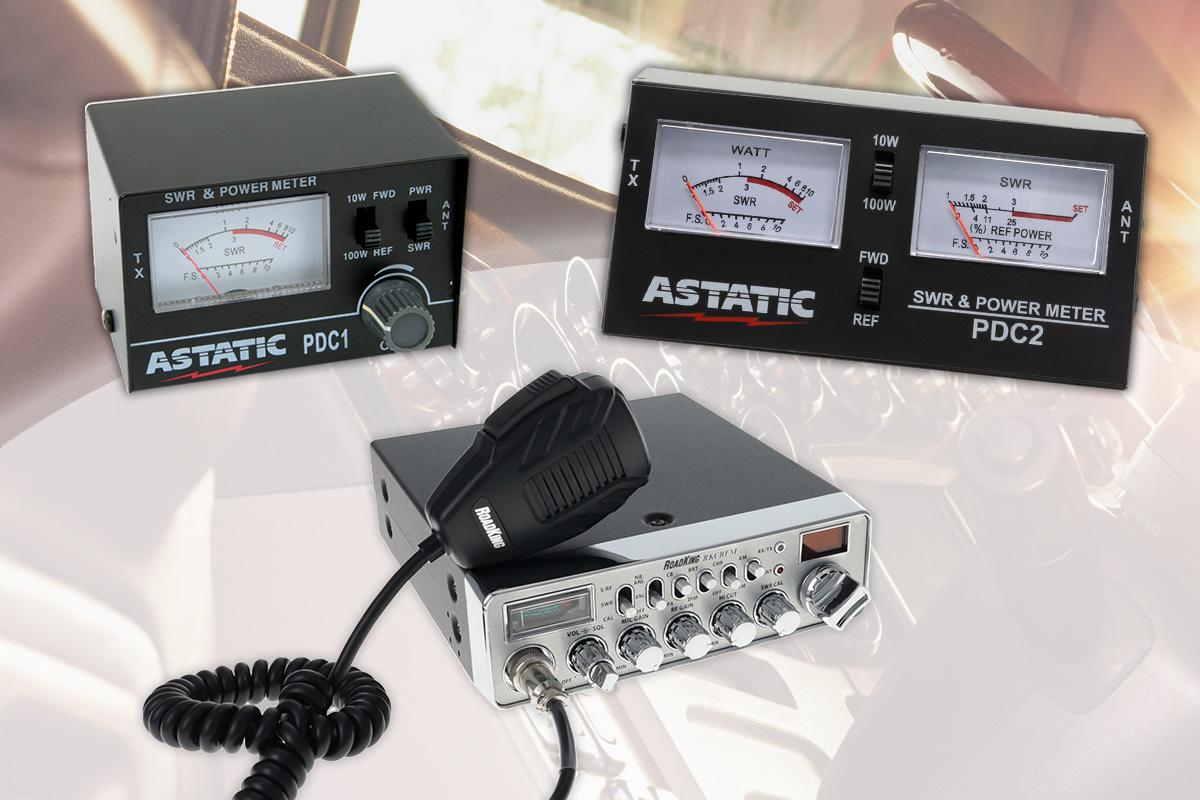How to Improve Your SWR Reading When Installing a CB Radio and Antennas
January 22, 2025

Properly installing your CB radio and antennas is important to making sure they’re at their optimal performance. One of the most critical factors to monitor during installation is your SWR (Standing Wave Ratio). A high SWR can significantly impact your antenna’s performance and even damage your radio.
What is SWR?
SWR stands for Standing Wave Ratio. Testing your SWR helps you understand the condition of your antenna and antenna cable. Since antennas are usually located outside the transmitter, it’s important to make sure the antenna and coax cable are properly matched to the transmitter. This ensures your antenna radiates the maximum amount of power. A lower SWR reading means your antenna is better tuned and capable of transmitting power efficiently. A perfect reading of 1:1 indicates that all the power transmitted is radiated by the antenna. If you get a higher reading, this will indicate lost power and potential issues.
Why is SWR Important?
High SWR: Your antenna won’t perform well, reducing your range and clarity.
Properly Tuned Antenna: A better-tuned antenna offers more range, allowing you to communicate more efficiently.
How to Check Your SWR
To check your SWR, you’ll need an SWR meter or some CB Radios like the RoadKing AM/FM CB Radio have them built in. We offer a range of SWR meters through our Astatic brand, making it easy to check your readings if your CB Radio does not have one.
With a SWR meter, follow these steps:
- Connect the SWR Meter: Place it between the antenna and the radio.
- Set the Meter: Switch it to Forward or Set mode (it may also say Cal or Dir depending on the meter).
- Power On: Make sure your radio is connected to power and turned on. Press the “Set” or “Cal” knob to move the needle to the top of the scale, usually this is labeled “Set.”
- Switch to Reflected Mode: Release the transmit button and switch to SWR mode.
- Check the Reading: Transmit using the CB mic and note the SWR reading on the channel you’re on.
If your SWR meter is built into your CB Radio, follow these steps:
- On the RKCBCLASSIC, complete the following steps on channels 1 & 40:
- Position meter switch to CAL
- Press microphone PTT switch. (Transmit)
- Calibrate meter with the SWR Cal control by adjusting the needle to the down arrow.
- Move the meter switch to the SWR position while continuing to press the microphone PTT switch.
- Record the number.
When completed, compare your results to the tuning solutions below:
- If SWR on channels 1 & 40 are below 2.0, your radio can be operated safely.
- If SWR on the lowest channel is higher than it is on the highest channel, your antenna system is electrically short. Your antenna length may need to be increased.
- If the SWR on channel 40 is greater than on channel 1, your antenna is “LONG”, and reduction of your physical length will correct this situation. Adjustment should be made in 1/8” at a time.
How to Read SWR Readings
Measuring Standing Waves is done by comparing the forward (FWD) power and reflected (REF) power. This difference is expressed as a ratio of reflected power to forward power. Here’s how much power is lost at different SWR levels:
| Power Loss | SWR |
| 0% | 1:1 |
| 2% | 1.3:1 |
| 3% | 1.5:1 |
| 6% | 1.7:1 |
| 11% | 2:1 |
| 25% | 3:1 |
| 38% | 4:1 |
| 48% | 5:1 |
| 70% | 10:1 |
A ratio from 1.1:1 to 2:1 is usually considered satisfactory for most operations. If your readings are above 2:1, consider these common issues:
Trouble Shooting SWR
- Antenna Adjustment
- Test SWR across the frequency band (e.g., channels 1,20,40).
- Adjust your antenna’s length using the grub screw or adjustment screw (refer to your antenna’s manual).
- Make small adjustments, as even small changes can make a big difference.
- Grounding Issues
- Grounding is one of the most common problems, especially with magnetic-mount antennas. Make sure your antennas have proper grounding to the vehicle's surface. This is a common problem when you get a high SWR reading.
- Cable Connections
- Check all the coax cables to make sure they are secure and not damaged. Loose cables or improper cables can lead to poor SWR readings.
- Antenna Positioning
- Avoid placing your antenna beside obstructions like a roof rack or other metal parts of your vehicle. Ideally, mount your antenna as high as possible and away from interfering objects. The coax needs to be serpentine and not kinked or coiled. Reposition the antenna if needed.
For more information on RoadPro Family of Brands products visit our website. To connect with other truck drivers, join the RoadPro Driver's Lounge on Facebook.

Submit your comment: